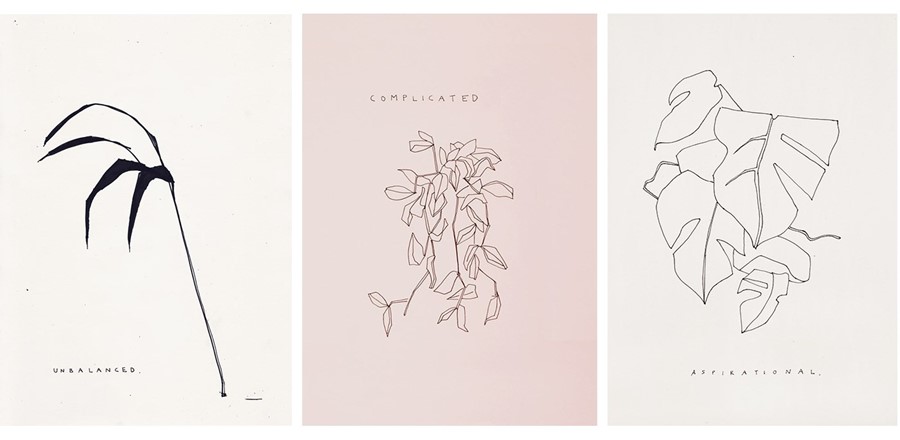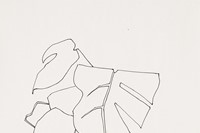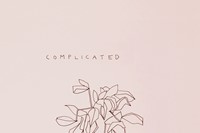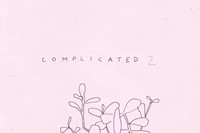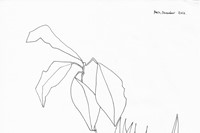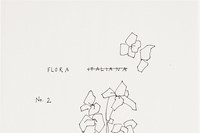Ever thought of attributing character traits to your chosen flora? Artist and designer Elisabeth Bukanova has, with her new illustrated series, and to charming effect
Elisabeth Bukanova owns a lot of plants. Or at least, one would assume so looking at her latest series of illustrations, Houseplants – 20 line drawings depicting said botany accompanied by succinct written captions that sum up what runs through her head when she sees them. Some are labelled with emotions, some turns of phrase, others are neat plays on words, all capturing each plant’s particular vibe in an endearing scrawl. The illustrations are playful and amusing, while their captions reference compulsive behaviour and obsession. And therein lies their charm: these works are lighthearted, but in no way flippant, and amusing without failing to resonate.
Bukanova, a London-based artist, art director and designer, started this project over the winter when a scarcity of both life models and daylight hours forced her to turn to the greenery of her living room for subject matter. There, she noticed the varying characteristics of the flora dotted around her home. As living things, plants punctuate our lives, communicating in abstract, ineffable ways; intrigued, AnOther spoke to Bukanova about the origins of Houseplants, the practice of putting pen to paper, and the detail required to pare things back.
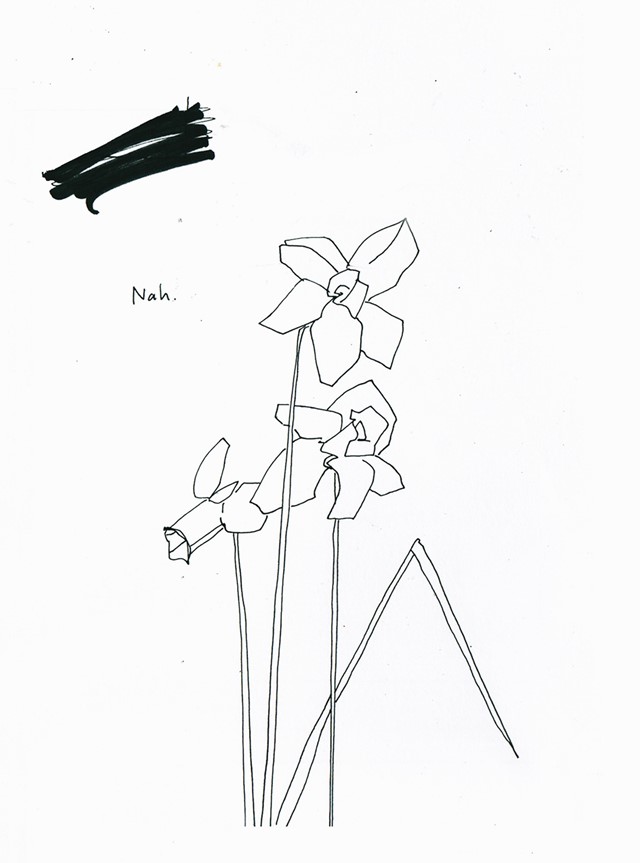
On her fascination with plants…
“I’ve been always interested in plants and I associate certain things with them. For example, if I see a monstera, I start to think about expensive design hotels, or when I see artificial-looking orchids, they remind me of flashy nightclubs. Carnations? They are probably on every Soviet Russian postcard there is (that’s where I’m originally from). I started looking at the way we use plants as a means of communication; to say sorry, for example; or to show that you really like somebody, with a rose; to show compassion with lilies. And then their purpose or use: clean air, or better skin, like when people grow their own aloe vera at home. Or even just concealing an ugly fireplace.”
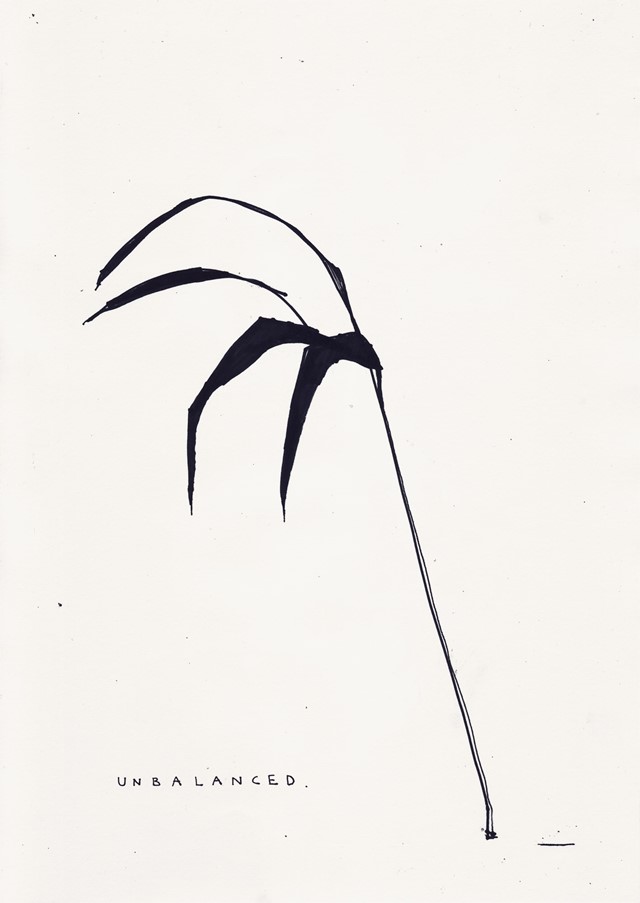
On a life spent drawing…
“I’ve been drawing since I was very little; we were moving around a lot, and I didn’t have a lot of toys. So my parents said, ‘There you go, have a pen,’ instead. My flatmate was sitting next to me whilst I was drawing once and he said, ‘you never lift your pen from the paper, do you?’ And I didn’t even realise! I thought I was just drawing normally, but mostly it's a subconcious, continuous line. And I think that's something you can only do without thinking if you've been drawing for as long as you can remember.”

On achieving a minimal aesthetic…
“No matter what I’m doing, the most difficult thing is to be bare and minimal, because you have to start extravagantly and then pare it back. You need all those initial layers to get to a final, minimal work that makes sense. From illustration, to set design, to art direction, it takes a lot a lot of practice to say a lot with not very much. When you play with these different disciplines and decide to make minimal work, it might come across as quite cryptic. So the true art lies in when you manage to get an emotional reaction out of people, delivering a message with very little.”
